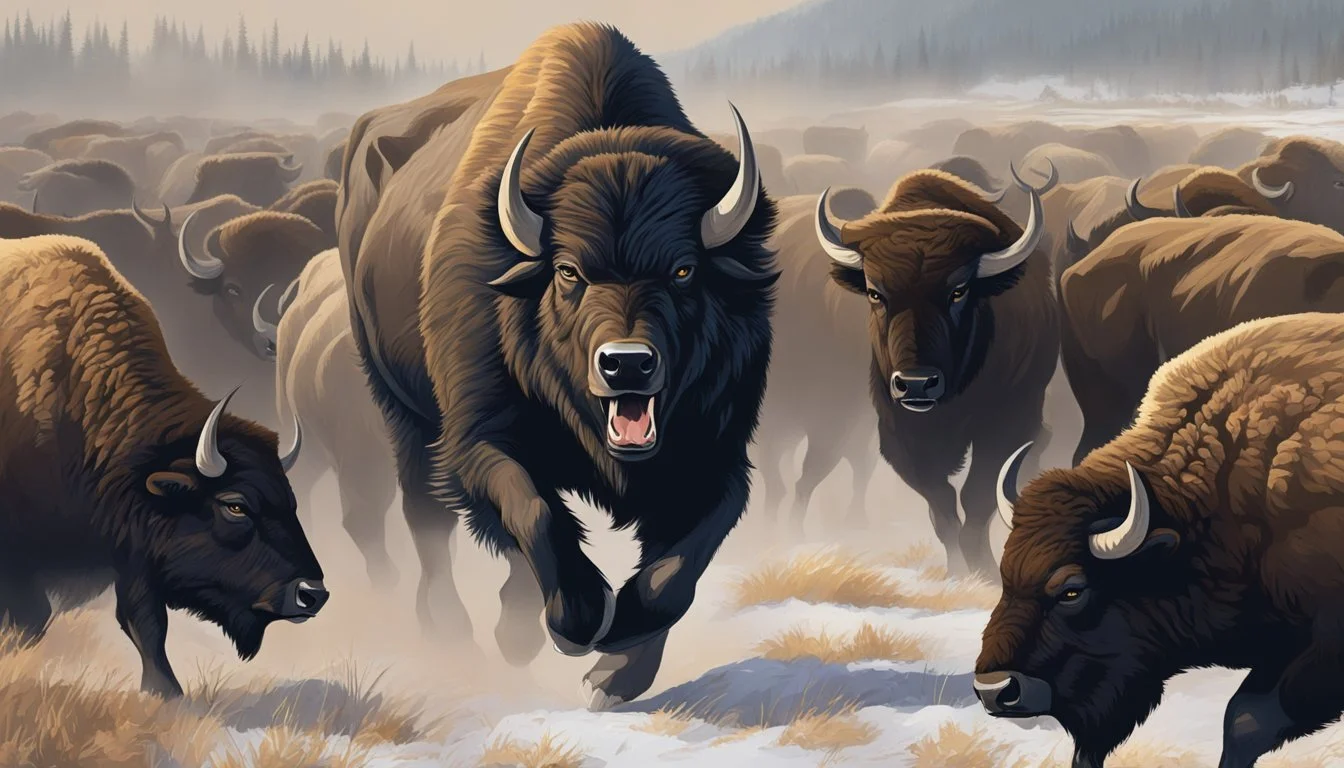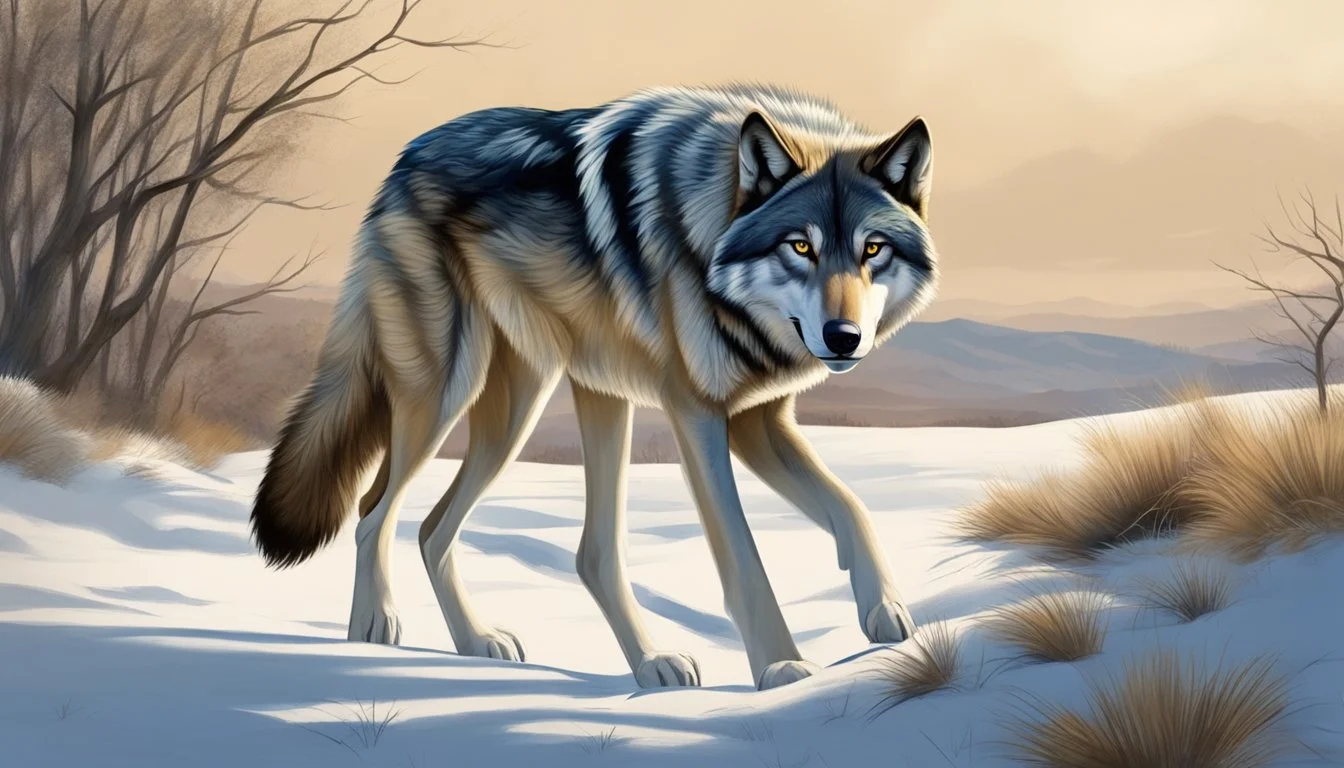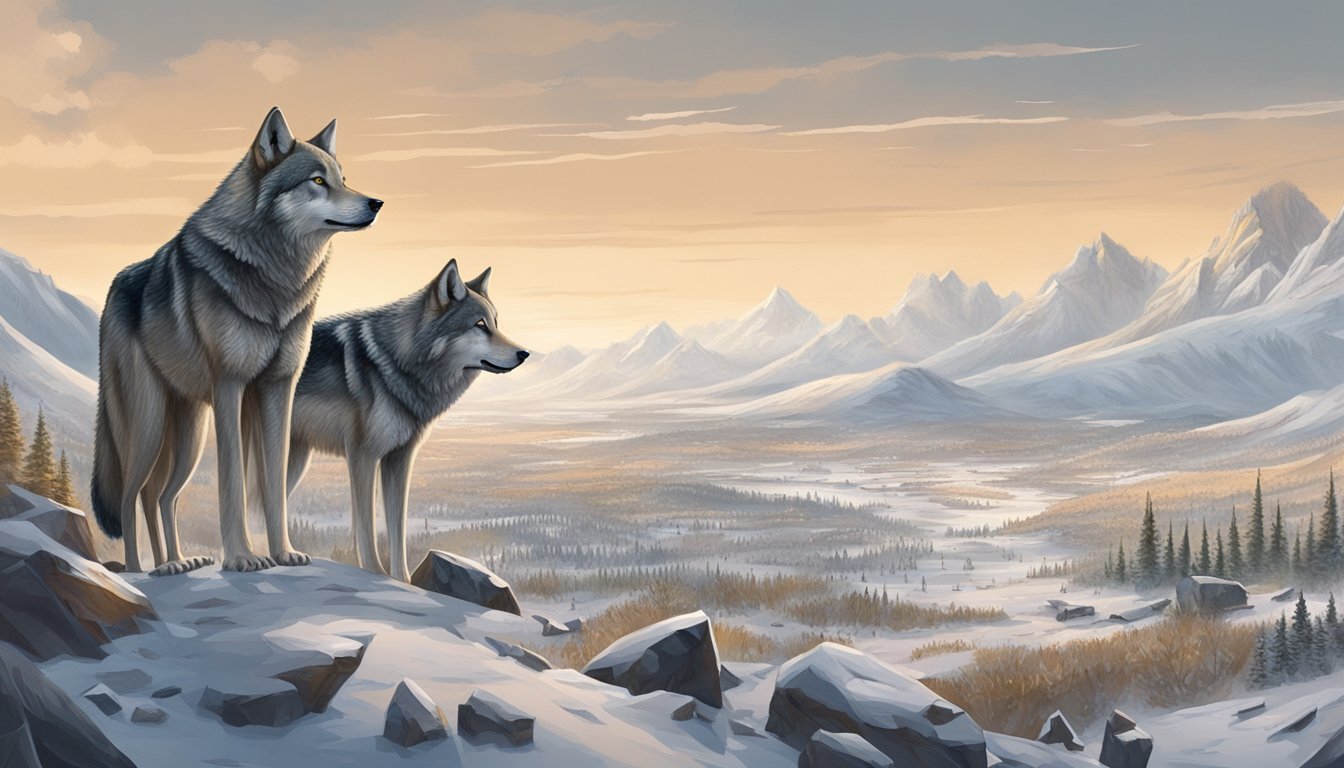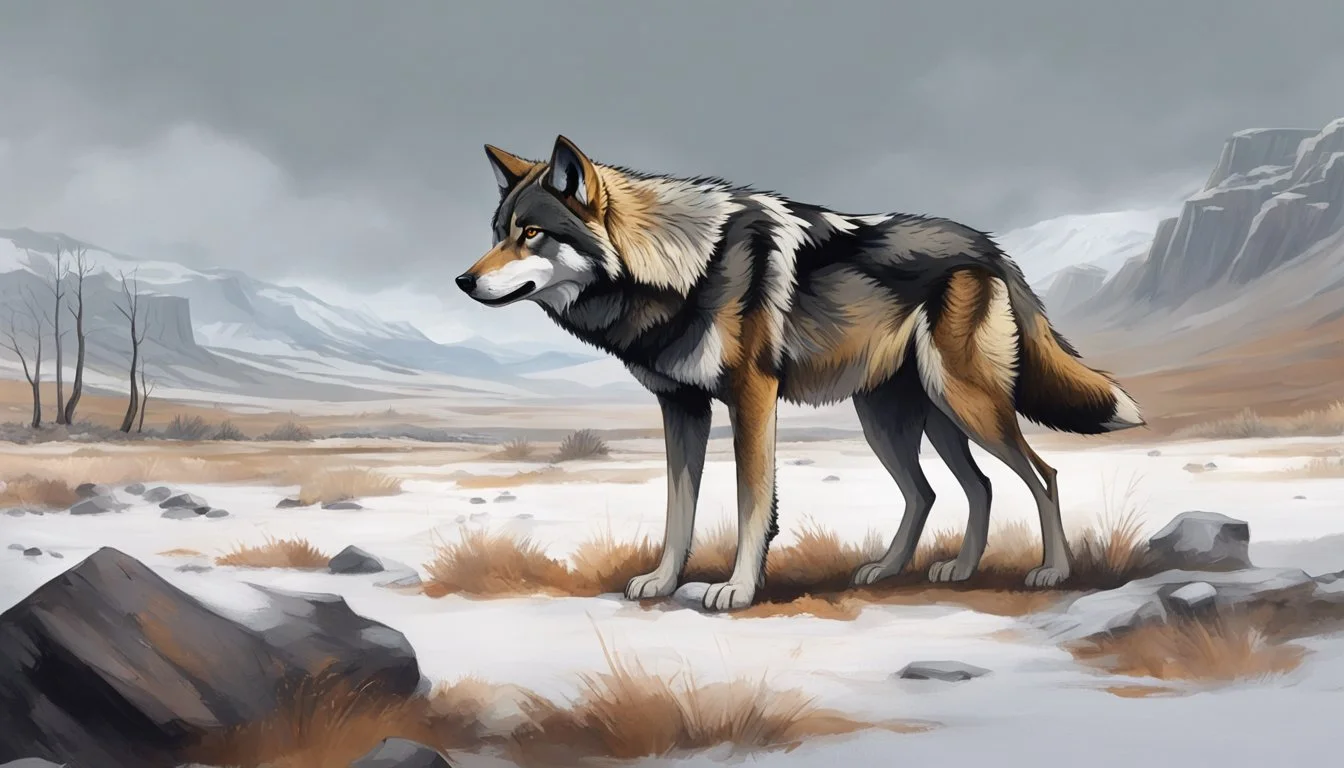Yellowstone's Approach to Violence: Balancing Realism and Storytelling in Modern Western Drama
Yellowstone, the hit series on Paramount Network, has captivated audiences with its gripping portrayal of the Dutton family's struggle to maintain control over their vast ranch. Created by Taylor Sheridan, the show has garnered both praise and criticism for its depiction of violence.
The violence in Yellowstone serves as a reflection of the harsh realities faced by ranchers in the modern American West, while also functioning as a narrative device to heighten tension and drive character development. From brutal confrontations between characters to shocking acts of retribution, the show doesn't shy away from graphic content.
Critics argue that some scenes push the boundaries of what's necessary for storytelling, while supporters contend that the violence is integral to the show's authenticity. As viewers debate the merits of Yellowstone's approach, the series continues to explore the complex dynamics of power, family, and survival in a world where violence often seems unavoidable.
Exploring the Themes of Violence in Yellowstone
Violence permeates the world of Yellowstone, serving as a lens to examine power dynamics, family loyalty, and cultural tensions. The show's graphic depictions spark debates on necessity versus gratuitousness while illuminating complex character motivations.
Depicting Realism Through Conflict
Yellowstone's violent scenes aim to portray the harsh realities of ranch life and power struggles in Montana. Physical confrontations and deadly encounters underscore the high stakes for land ownership and control. The show doesn't shy away from brutality, presenting unvarnished depictions of fights, shootouts, and retribution.
These raw portrayals serve to immerse viewers in the gritty world of the Dutton ranch. By showcasing the consequences of violence, Yellowstone highlights the cyclical nature of conflict in this setting. Characters face moral dilemmas as they navigate a landscape where force often dictates outcomes.
The graphic nature of these scenes has sparked debate among fans. Some argue it adds authenticity, while others find it excessive or distracting.
Violence: A Character Study of John Dutton
John Dutton, portrayed by Kevin Costner, embodies the show's complex relationship with violence. His actions reveal a man shaped by a harsh environment, willing to use force to protect his legacy. John's violent tendencies stem from a deep-seated belief in preserving his way of life at all costs.
The character's approach to conflict illuminates his worldview and leadership style. John sees violence as a necessary tool in a world that threatens his family and land. His willingness to cross moral lines raises questions about the price of power and the corruption of noble intentions.
Costner's nuanced performance brings depth to John's violent acts. He portrays a man grappling with the weight of his choices, even as he remains committed to his ruthless path.
Cultural Reflections: Violence Against Indigenous People
Yellowstone tackles the sensitive topic of violence against Indigenous people, shedding light on historical and ongoing conflicts. The show depicts clashes between ranchers and Native American tribes, exploring the long-standing tensions over land rights and cultural preservation.
These portrayals aim to highlight the complexities of modern Native American experiences. Yellowstone doesn't shy away from showing the brutal realities faced by Indigenous characters, including discrimination and physical threats.
The depiction of violence in this context serves as a stark reminder of historical injustices. It prompts viewers to confront uncomfortable truths about the treatment of Native Americans in the American West.
Comparative Analysis: Yellowstone and Taylor Sheridan's Sicario
Taylor Sheridan's work on both Yellowstone and Sicario reveals common threads in his approach to violence. Both productions feature intense, graphic scenes that serve narrative and thematic purposes. In Sicario, violence underscores the brutality of drug cartels and law enforcement's moral compromises.
Yellowstone applies similar principles to the American West, using violence to explore power dynamics and moral ambiguity. Sheridan's storytelling in both works doesn't glorify violence but presents it as a harsh reality of the worlds he portrays.
The comparative analysis highlights Sheridan's consistent use of violence as a storytelling tool. It serves to create tension, drive character development, and explore broader societal issues in both rural Montana and the U.S.-Mexico border region.
Character Dissection and Development
Yellowstone's characters embody complex personalities shaped by violence and family legacy. Their development reveals deep-rooted motivations and moral ambiguities that drive the show's narrative.
John Dutton: The Embodiment of a Modern Patriarch
John Dutton, portrayed by Kevin Costner, stands as the cornerstone of the Yellowstone ranch and family. His character blends traditional values with ruthless pragmatism. John's actions often blur ethical lines, justified by his unwavering commitment to preserving his family's legacy.
His approach to violence is calculated, viewing it as a necessary tool for survival in a changing world. This mindset shapes his relationships, particularly with his children, whom he grooms to protect the Dutton empire.
John's character evolves as he grapples with mortality and the weight of his choices. His moments of vulnerability, though rare, offer glimpses into the man behind the stoic facade.
The Complex Psyche of Beth Dutton
Beth Dutton, played by Kelly Reilly, emerges as one of Yellowstone's most dynamic characters. Her razor-sharp wit and aggressive tactics mask deep-seated emotional trauma.
Beth's relationship with violence is both personal and professional. She weaponizes her intelligence and sexuality, often resorting to psychological warfare. Her loyalty to the Dutton name drives her to extreme measures, showcasing a willingness to cross moral boundaries.
Her character development reveals layers of complexity. Beth's fierce exterior slowly peels back to expose vulnerability, particularly in her relationship with Rip. This evolution adds depth to her character, balancing her ruthless business acumen with moments of genuine emotion.
The Duttons: Family Dynamics and Violence
The Dutton family's intricate dynamics form the core of Yellowstone's narrative. Violence intertwines with love, loyalty, and betrayal within this complex family unit.
Each family member's approach to violence differs, reflecting their individual struggles and roles within the Dutton legacy. Kayce's internal conflict between his Dutton heritage and Native American connections adds a layer of complexity to the family's use of force.
The show explores how violence shapes family bonds, often strengthening loyalty while simultaneously creating rifts. These dynamics evolve throughout the series, testing the limits of familial ties and the lengths to which the Duttons will go to protect their own.
Analyzing Audience Reactions and Viewership Trends
Yellowstone's audience engagement and viewership have evolved significantly throughout its run. The show's controversial themes and intense storylines have sparked passionate discussions among fans, while viewership numbers reveal intriguing patterns across seasons.
Evaluating Viewership Metrics Across Seasons
Yellowstone's viewership has shown remarkable growth since its debut. The series premiere in 2018 drew 2.8 million viewers. By Season 5, the show reached new heights. The Season 5 finale attracted a record-breaking 11.4 million same-day viewers across Paramount Network and CMT.
This impressive growth reflects increasing audience interest and investment in the Dutton family saga. The show's ability to maintain and expand its viewership over five seasons is a testament to its compelling storytelling and character development.
Key factors contributing to this success include:
Strong word-of-mouth recommendations
Strategic marketing campaigns
Consistent quality in production values
Fan Perspectives: From Reddit Discussions to Survey Data
Online fan communities, particularly on Reddit, have become hubs for in-depth Yellowstone discussions. These forums provide valuable insights into audience reactions and interpretations of the show's themes and plot developments.
Common topics of discussion include:
Character motivations and relationships
Predictions for future storylines
Analysis of the show's portrayal of Western culture
Survey data has revealed that fans appreciate the show's complex characters and intricate plotlines. Many viewers cite the family dynamics and power struggles as key reasons for their continued engagement with the series.
Seasonal Highs and Lows: A Comparative Look at Seasons 1 Through 5
Each season of Yellowstone has had its standout moments and audience reactions. Season 1 laid the groundwork, introducing viewers to the Dutton family and their world. It garnered solid initial viewership but faced some criticism for its pacing.
Season 3 marked a turning point, with a dramatic finale that significantly boosted audience engagement. This momentum carried into Season 4, which saw further increases in viewership and critical acclaim.
Season 5 emerged as the most-watched season in Yellowstone's history. It secured 13.6 million viewers across all cable premiere broadcasts and initial encores. This season's success can be attributed to:
Heightened stakes in the storyline
Character development payoffs
Increased promotional efforts
The Cultural Impact of Yellowstone on Modern Western Genre
Yellowstone has significantly reshaped the Western genre for contemporary audiences. The show's portrayal of ranching life and conflicts in the modern American West has sparked renewed interest in Western narratives.
Reviving the Western: How Yellowstone Shapes Perceptions
Yellowstone breathes new life into the Western genre by blending traditional elements with current issues. The Dutton Ranch serves as a backdrop for exploring land disputes, political intrigue, and family dynamics in a 21st-century context.
The show's popularity on Paramount+ has introduced a new generation to Western themes. It presents a grittier, more complex view of the American West than classic Westerns.
Yellowstone tackles contemporary topics like environmental conservation and indigenous rights. This approach makes the genre more relevant to modern viewers.
Influence on Pop Culture and Modern Western Narratives
Yellowstone's success has inspired a wave of new Western-themed content across various media. The show's distinctive visual style and storytelling have set a new standard for modern Westerns.
Its impact extends beyond television, influencing fashion trends and tourism. Cowboy hats and ranch-inspired clothing have seen a resurgence in popularity.
The series has also sparked discussions about land use and rural American values. It has brought attention to real-life conflicts between ranchers, developers, and government agencies.
Yellowstone's exploration of power dynamics and family legacy resonates with audiences. This has led to increased interest in stories set in the contemporary American West.
Environmental and Sociopolitical Commentary
Yellowstone interweaves environmental themes and political commentary throughout its narrative. The show examines complex relationships between land, power, and cultural identity in the American West.
The Land and Legacy: Environmentalist Views Within the Show
Yellowstone portrays ongoing tensions between conservation efforts and economic development. The Dutton Ranch represents a traditional way of life tied to the land, while outside forces push for changes that threaten this legacy. Environmental concerns like wildlife protection and resource management feature prominently.
The series highlights debates over public vs. private land use. It depicts conflicts between ranchers, developers, and government agencies vying for control of Montana's natural spaces. Native American perspectives on land stewardship add further complexity to these discussions.
Socio-political Undercurrents: The Dutton Ranch Against the World
The Dutton family's struggles reflect broader sociopolitical issues in rural America. Their ranch symbolizes resistance against urbanization and changing demographics in the West. The show explores themes of wealth inequality and the decline of traditional industries.
Political power plays a central role, with local and state government often at odds with the Duttons' interests. Corporate influence in politics is scrutinized through storylines involving land developers and energy companies.
The series also touches on Native American sovereignty and the long-term impacts of historical injustices. These elements add depth to the show's examination of power dynamics in the modern American West.
The Aesthetics of Violence: Cinematography and Direction
Yellowstone's portrayal of violence is intricately tied to its visual style and directorial choices. The show's cinematography and direction work in tandem to create a visceral viewing experience.
Visual Storytelling: Violence Through the Lens
Yellowstone's cinematography captures violence with unflinching realism. Wide shots emphasize the vast Montana landscape, contrasting it with intimate close-ups during violent encounters. The camera often lingers on the aftermath, forcing viewers to confront the consequences.
Lighting plays a crucial role, with harsh sunlight or moody shadows setting the tone for confrontations. Slow-motion sequences heighten tension, while quick cuts convey chaos and brutality. Blood and injuries are depicted in graphic detail, leaving little to the imagination.
The show's visual palette shifts subtly during violent scenes. Muted earth tones give way to stark contrasts, emphasizing the disruption of the natural order.
Taylor Sheridan's Direction: Crafting Intense Moments
Taylor Sheridan's direction in Yellowstone is marked by a raw, uncompromising approach to violence. He favors long takes that build tension, allowing conflicts to simmer before erupting.
Sheridan often places the camera at eye level during violent encounters, immersing viewers in the action. He utilizes sound design effectively, with sudden silences or amplified ambient noises heightening the impact of violent acts.
Character reactions are given equal weight to the violence itself. Sheridan focuses on faces before, during, and after brutal moments, exploring the emotional toll of such actions.
His staging of violent scenes is deliberate and choreographed, yet maintains a sense of unpredictability. This approach creates a heightened realism that serves the show's themes of power and survival.
Murder and Morality: The Justifications of Violence
Violence permeates the world of Yellowstone, raising complex questions about its moral justification. The Dutton family's actions blur the lines between protection and aggression, while philosophical perspectives examine the necessity of violent measures.
Protecting the Ranch: The Justifications for Violent Measures
The Dutton family's use of violence often stems from their desire to protect their ranch and legacy. John Dutton, as the family patriarch, views violent actions as necessary to preserve his land and way of life. His children, particularly Kayce and Beth, engage in violent acts to defend family interests.
This protective violence extends to eliminating perceived threats, sometimes through murder. The Duttons justify these actions as essential for survival in a hostile environment where traditional legal channels may fail them.
Critics argue that this approach perpetuates a cycle of violence and undermines moral principles. However, supporters see it as a pragmatic response to existential threats faced by the Dutton ranch.
Violence as Necessity or Choice: A Philosophical Inquiry
The show's portrayal of violence raises philosophical questions about its justification. Some characters view violence as a regrettable necessity in a harsh world, while others seem to embrace it as a first resort.
Moral philosophers debate whether violence can ever be truly justified or if it always represents a moral failing. The concept of self-defense is often cited as a potential justification, but the line between defense and aggression becomes blurred in Yellowstone's complex scenarios.
The show challenges viewers to consider whether violence can be morally justified when legal systems fail or are corrupt. It also explores the psychological toll of violence on perpetrators and victims alike.
Digital Footprint and Content Distribution
Yellowstone's digital presence extends far beyond traditional television. Its availability on streaming platforms and social media engagement have significantly amplified its reach and impact.
Streaming Influence: Yellowstone on Paramount+ and Peacock
Paramount+ serves as the primary streaming home for Yellowstone, offering viewers on-demand access to all seasons. The show's popularity has driven substantial subscriber growth for the platform. Peacock also carries earlier seasons, expanding Yellowstone's digital footprint. This multi-platform approach has increased accessibility, allowing new audiences to discover the series.
Streaming data reveals binge-watching trends, with many viewers consuming entire seasons in short periods. This behavior has contributed to Yellowstone's sustained popularity between seasons.
The Role of Social Media in Amplifying the Show's Presence
Social media platforms have become crucial in expanding Yellowstone's audience. Official accounts on Twitter, Instagram, and Facebook share behind-the-scenes content, cast interviews, and teasers. These posts generate significant engagement, with fans discussing plot developments and character arcs.
Fan-created content, including memes, fan art, and theory discussions, further amplifies the show's online presence. This user-generated content creates a vibrant digital community around Yellowstone, keeping viewers engaged between episodes and seasons.
Hashtags like #YellowstoneTV trend regularly, especially during new episode premieres. This social media buzz attracts potential new viewers and reinforces the show's cultural relevance.
Conclusion
Yellowstone's approach to violence remains a complex and divisive aspect of the show. The graphic depictions serve to highlight the harsh realities of ranching life and power struggles in the American West.
Violence in Yellowstone often acts as a narrative tool, advancing plot lines and character development. It reinforces the show's themes of family loyalty, survival, and the clash between tradition and progress.
Critics argue some scenes cross the line into gratuitous territory. Supporters maintain the visceral nature of the violence is integral to the show's raw, unflinching portrayal of its world.
Yellowstone's legacy will likely be shaped, in part, by its controversial use of violent imagery. The show has sparked important discussions about the role and impact of graphic content in prestige television.
Ultimately, viewers must decide for themselves whether Yellowstone's violent elements enhance or detract from the overall narrative. The show's approach continues to challenge audience expectations and push boundaries in contemporary Western storytelling.









